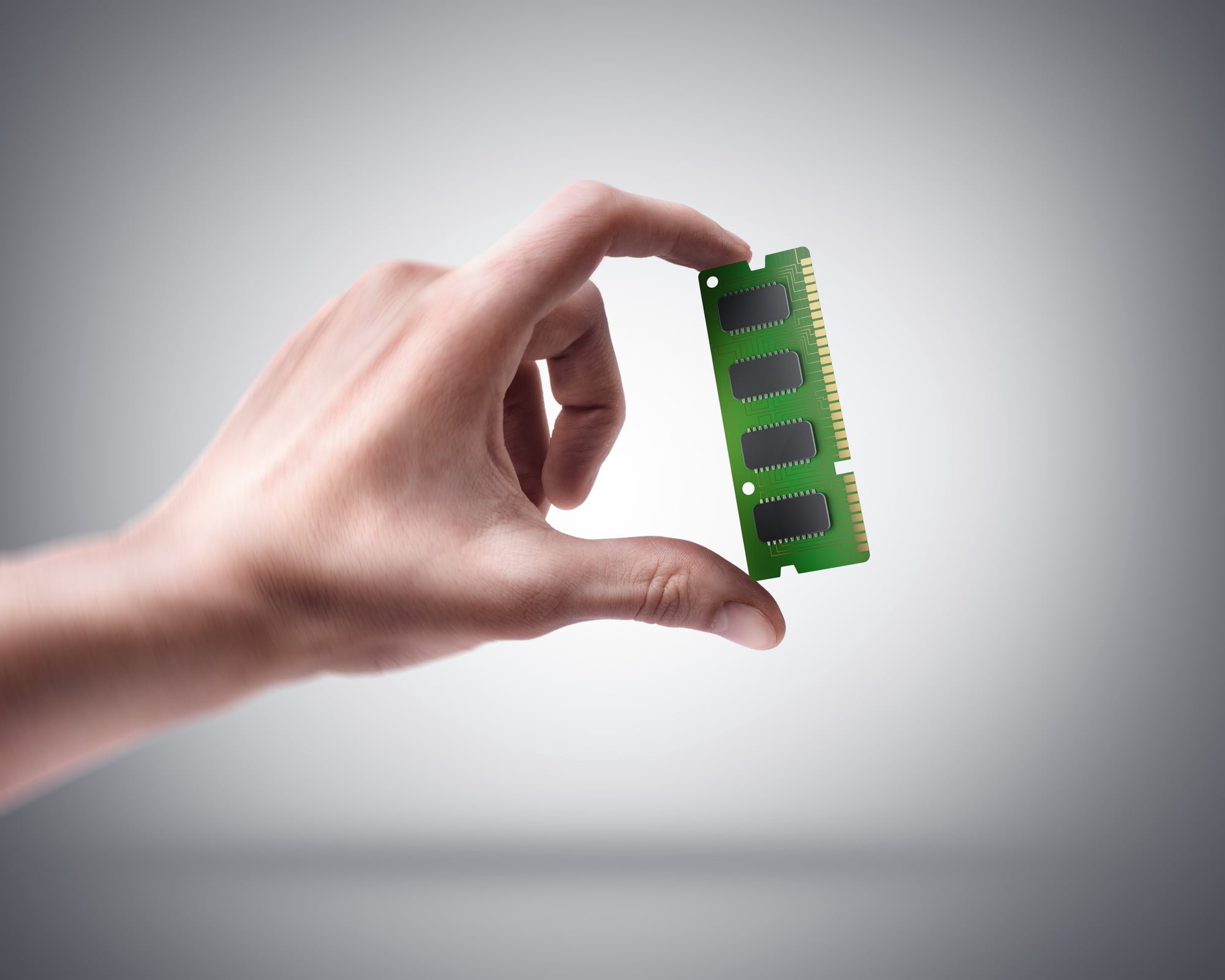DDR3 RAM had a long run after its 2007 release, powering mainstream laptops and desktop computers for many years. However, in 2014, DDR4 RAM was released to the public and has since become the most common memory type in desktop PCs, laptops, and tablets. With major changes to its physical design, specifications, and features, motherboards with DDR4 slots cannot use DDR3 RAM, and DDR4 RAM can’t be put into a DDR3 slot. Neither is compatible with the newer DDR5 memory.
DDR4 versus DDR3 RAM
DDR4 tends to run at 1.2 volts by default, whereas DDR3 runs at 1.5V. While it may not seem like much, that’s a 20% improvement in efficiency between generations. For most home users, the difference in voltage ultimately results in lower power consumption and heat generation, which can be especially important in laptops where it can impact battery life.
DDR4 is not just more power efficient — it’s a lot faster, too. DDR3 specifications range between 800 to 2,133 MTps (millions of transfers per second). In comparison, DDR4 RAM ranges between 2,133 to 3,200 MTps, not to mention the faster kits available through XMP and overclocking.
When purchasing RAM, you can identify the speed by its name, e.g. Crucial Ballistix 16GB DDR4-3200. This indicates it is DDR4 RAM at 3,200 MTps.
MTps versus MHz
To avoid any confusion, it’s worth clearing up the difference between MTps and MHz. Some companies will advertise RAM in MTps and others in MHz.
MTps (millions of mega transfers per second) measure the bus and channel speed based on effective cycles per second. MHz (megahertz per second) measures the transmission speed of a device in one million cycles per second.
Generally, DDR RAM is measured in MTps, whereas SRAM (static RAM) is measured in MHz since it cannot produce more than one operation per second. DDR3 RAM operating at 1066.6MHz will be presented as DDR3 2133. As DDR, or double data rate, RAM has two processes running simultaneously, the 1066.6MHz is doubled to equate to 2133MTps.
Essentially, MHz and MTps are the same things, but it’s important to be aware of how a manufacturer represents their measurements.
Is DDR4 faster than DDR3 RAM?

DDR4 can and does run much faster than even the best DDR3, but there is some crossover.
In terms of transfer rate, DDR4 is capable of a higher million transfers per second. However, MTps isn’t the only specification to consider when purchasing RAM.
Timings, like Column Access Strobe latency (CL), also play an important part in the overall memory performance. CL determines the number of clock cycles it takes for RAM to deliver data requested by the CPU.
To put it into context, fast clock speeds don’t necessarily mean faster RAM. High latency can drag the results down slightly, so it’s worth comparing all the specifications to find the right type of RAM for your requirements.
Taking Corsair’s Vengeance DDR3 kits and pitting them against their Vengeance LPX DDR4 kits, there’s a clear difference in performance and speed.

While read/write speeds are marginally lower on their DDR4 kits compared to DDR3 at 2,133MHz, it’s important to remember this is the entry-level speed for DDR4.

Latency-wise, DDR3-1600 has a higher latency than any DDR4 kit. At 2,133MHz, the DDR4 kit is slightly higher than DDR3-2133, but as the memory clock speed increases, the overall latency decreases, even if the timings are looser.
Ultimately, DDR4 is faster than DDR3 RAM. It also offers more performance at a lower cost-per-dollar compared to any DDR3 RAM, except at its entry-level 1,600MHz.
High-Frequency DDR4 RAM
High-frequency DDR4 RAM like the Corsair Vengeance LPX 16GB is capable of reaching speeds of up to 4,000MHz. Gamers who want to push their machines to achieve the best performance can overclock their RAM for demanding systems.
However, manufacturers like HyperX have pushed the boundaries even further with their HyperX Predator DDR4 family of RAM, which is available between 2,666Mhz to 5,333Mhz.
In fact, in April, they achieved the world overclocking record of 7,200MHz with their HyperX Predator DDR4 memory.
Why DDR3 and DDR4 don’t work together

One of the main differences between DDR3 and DDR4 RAM is the layout of the physical pins. DDR3 RAM uses a 240-pin connector, whereas DDR4 uses a 288-pin connector. A motherboard with DDR4 compatibility won’t work with DDR3 RAM and vice versa. The connector pins are different so that you can’t accidentally install the wrong type of RAM.
The different voltage demands also mean that a system designed with DDR4 in mind wouldn’t provide the correct voltage for DDR3 at default and may not even be designed with that voltage capability in mind.
The difference between DD4 and DDR3 pricing
When DDR4 first came to the market, the price gap was significant. However, with more compatible motherboards and CPUs, DDR4 RAM has dropped in price.
But compared to DDR3, DDR4 RAM is often more expensive. It’s not a huge difference, especially if you’re buying a couple of modules. However, if you need a large amount of RAM, the costs can add up pretty quickly.
What about DDR5 RAM?
DDR5 RAM was released in 2020 but has yet to make a significant impact on the market.
With the release of Intel’s Alder Lake CPUs, it would be safe to say DDR5 will become more widely available in late 2021 and 2022.
DDR5 specifications start at 4,800MHz and cap at 6,400MHz, with the potential for faster clock speeds in the future.
Choosing the right RAM
DDR3 versus DDR4 RAM comes down to the hardware in your system. If you’re using an older motherboard and CPU, your option will likely be DDR3.
However, if you already have a compatible motherboard and CPU or are thinking of investing in one, DDR4 RAM is a more future-proof choice.
It’s slightly more expensive, and in very few cases at lower clock speeds it may not be as fast as DDR3 RAM, but it will be supported by the latest hardware.
Editors’ Recommendations
